The Lockheed F-104 Starfighter was a controversial yet widely adopted fighter and the first combat aircraft capable of Mach 2 speeds.
Gallery:




Features:
- Armament: 1x M61 Vulcan 20 mm cannon, 2x AIM-9B Sidewinder
- Camouflage: USAF bare metal
- Recreated with blueprints
- Fairly realistic performance
- A cockpit that should be VR compatible
Nonstandard Controls:
- AG 1 and Yaw: Nose Steering
- AG 2: Air Brake
- AG 3: Drogue Chute
- Throttle>95% for Afterburner
- VTOL for flaps
- Trim for trim
Notes:
- Thanks @ChiChiWerx for the USAF roundels
- Updated the AIM-9B; the ones on the F-100D had problems
- True to the real Starfighter, expect it to go very fast and not much else! Don’t try to out turn anything in it, use hit-and-run tactics.
Background:
The F-104 originated from an internal Lockheed study into what Korean war pilots felt they were lacking in their aircraft. Broadly, they wanted something small and simple with a high rate of climb. Based on this feedback, Lockheed set about designing the F-104 and presented the design to the USAF in 1952. They were interested, and after a brief competition which the F-104 won, the prototype was flying by 1954. Early issues meant the aircraft wouldn’t be accepted into service until 1958.
The F-104 was a cutting edge design and a radical departure from contemporary aircraft. It had small, thin, trapezoidal wings mounted far back on the fuselage. The pilot was seated far forward, and the aircraft featured a unique T-tail. It was the first aircraft to feature the now ubiquitous M61 Vulcan, and it was also the first to use the famous J79 engine. Such a powerful engine in a small and lightweight design meant that the Starfighter could reach Mach 2, the first production fighter aircraft to do so. It set a number of world records, including altitude, speed, and rate of climb.
Although it was designed as a daytime air superiority fighter, its impressive rate of climb led to the USAF adopting the Starfighter in the interceptor role. But its weapons, avionics, and limited fuel meant it was ill-suited for the task, and after less than a year they were handed over from the Air Defense Command to the Air National Guard. USAF Starfighters were deployed as a deterrent in Taiwan and Berlin, but did not see combat until Vietnam. There, they defended airborne early warning aircraft and performed close air support missions. No air-to-air kills were scored, and around a dozen aircraft were lost over the course of the war. Afterward, the F-104 quickly transitioned out of frontline USAF service.
The F-104 was also adopted by a number of foreign air forces for the roles of fighter, ground attack, and reconnaissance. But the Starfighter was not designed for fighter-bomber missions at low altitude in poor weather and difficult terrain. The F-104 was a difficult aircraft to fly, with high landing and takeoff speeds as well as a temperamental engine. Additionally, many pilots had minimal training and experience with high-speed jet aircraft like the Starfighter. All of these factors resulted in an extremely high loss rate for some operators; 292 German Starfighters and 116 pilots were lost to accidents. Other F-104 operators had much better safety records when the aircraft was flown in the intended roles and by more experienced pilots. The Starfighter was generally liked by its pilots for its impressive speed, but nevertheless its reputation remained poor in the eyes of many.
The Starfighter is an aircraft with a complicated legacy. It pushed the envelope in aircraft design and pioneered a number of technologies and design principles. It had incredible flight performance for its time, and was impressive even decades later. But it was rarely used in its intended role, and this led to numerous fatal accidents and a mixed reputation for the aircraft. When used appropriately, it proved to be a formidable aircraft in combat. Its diverse operators from across the globe led to a number of nicknames, including Zipper, Lawn Dart, Widowmaker, Eiko, Spillone, and Wicked One.
Specifications
Spotlights
- This craft is curated
- Bryan5 2.8 years ago
- TheCommentaryGuy 3.2 years ago
- Dragoranos 3.2 years ago
- ChihiroFujisaki 10 months ago
- LunarEclipseSP 10 months ago
General Characteristics
- Successors 3 airplane(s) +7 bonus
- Created On Windows
- Wingspan 22.8ft (6.9m)
- Length 54.3ft (16.5m)
- Height 12.7ft (3.9m)
- Empty Weight 8,421lbs (3,820kg)
- Loaded Weight 14,440lbs (6,550kg)
Performance
- Power/Weight Ratio 1.898
- Wing Loading 66.5lbs/ft2 (324.5kg/m2)
- Wing Area 217.3ft2 (20.2m2)
- Drag Points 1546
Parts
- Number of Parts 304
- Control Surfaces 5
- Performance Cost 1,410


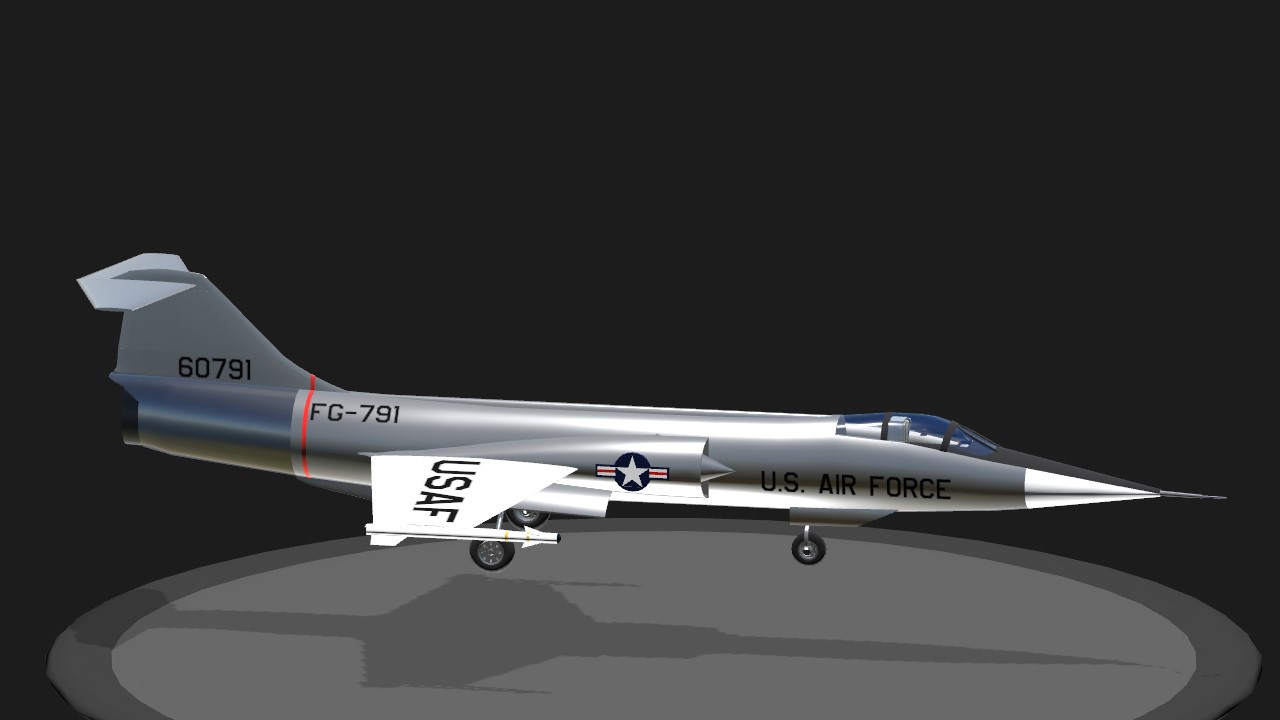
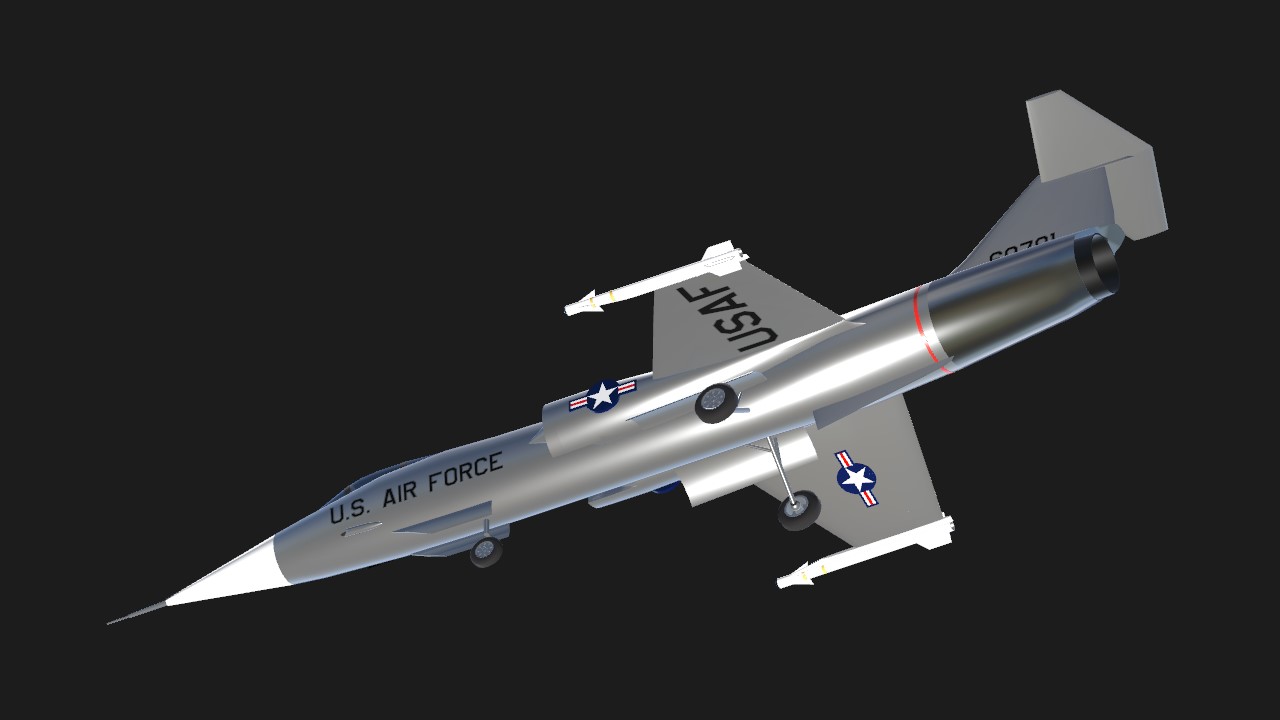
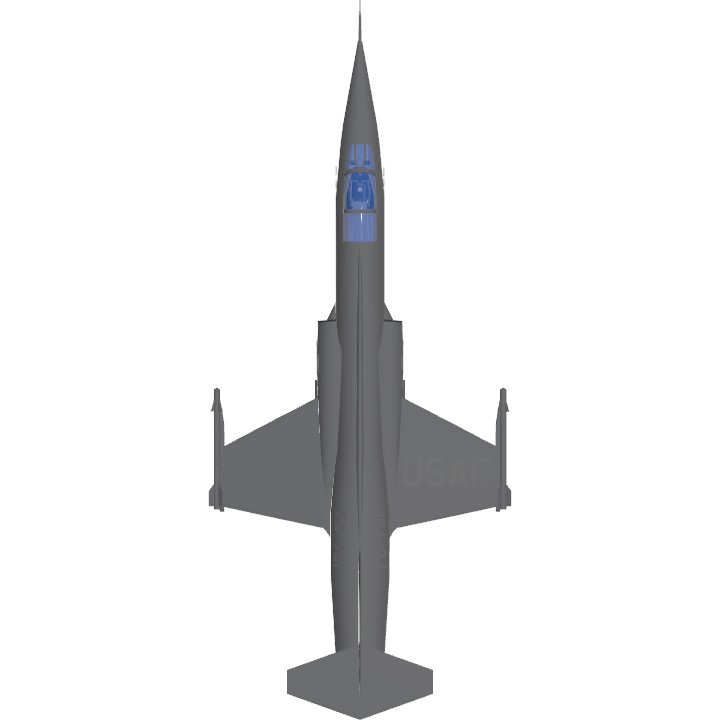
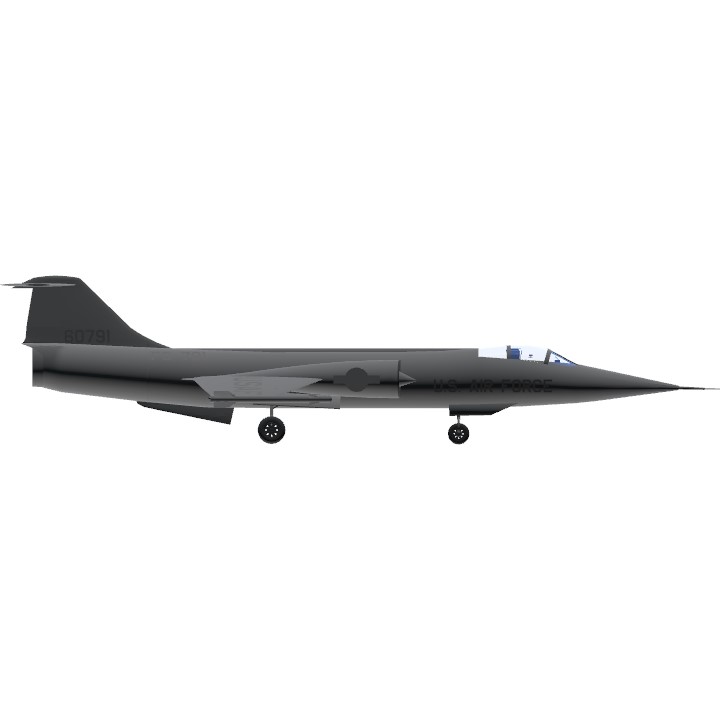
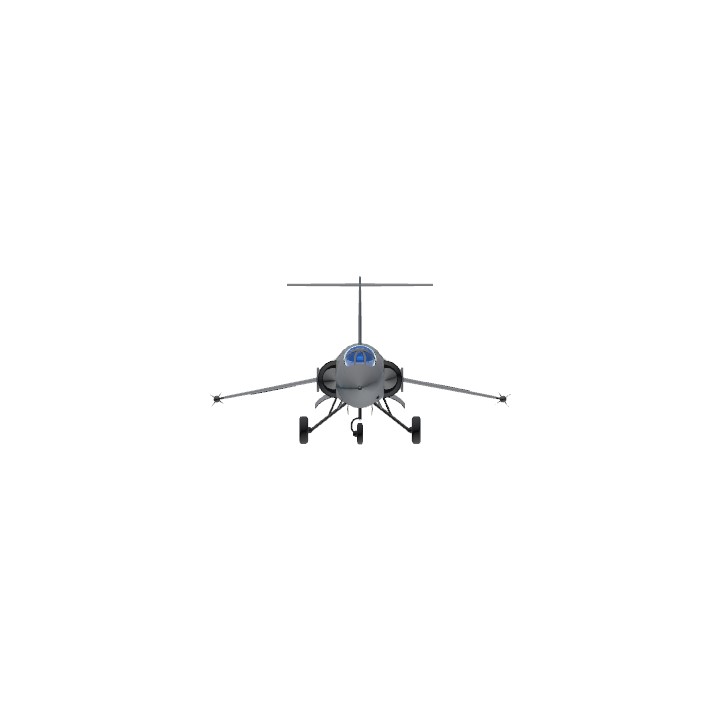
@DeezDucks I think your the only person who I've ever seen use the comments for its intended reason.
Afterburner
Gave you a 69th upvote :D
@Sharkdude300 Nice! can't wait for the F-106. what about the F-110 tho? ;D
@Sharkdude300 Nice! can't wait for the F-106. what about the F-110 tho? ;D
@OrionIndustries Yep, that's the goal. Four down, two to go. I'll probably make the prototypes and mockups (103, 107, 108) at some point as well, but not right after.
Are you planning on making all the century series fighters?
Awesome, and only 300 parts! You've earned yourself a follower.
@DeezDucks so that's why its sort of banana shaped at the back... huh, TIL
When to do an F-4?
can you make one with tip tanks?
@DeezDucks Thanks for the feedback :)
I wasn't sure how to implement the gear doors as they should be, but I know with a little bit of FT it can be done somehow.
As for the exhaust angle, I totally missed that detail so thank you for pointing it out. I'll be sure to correct that for any future Starfighter variants I make.
Lawn dart
I love me an F-104. Just some things for note, the rear gear doors are supposed to be sectioned in two parts, one stays open with the gear and the other closes when the gear is down. Also a lot of people get this wrong in SP but the engine in the 104 is tilted at about a 2-3 degree angle upwards, idk if that's to fit the engine in the body without tailstriking, or to counteract some sort of flight tendency I really don't know. But the afterburner exhaust should reflect that else it looks rather strange. Overall pretty good job :)
excellent job